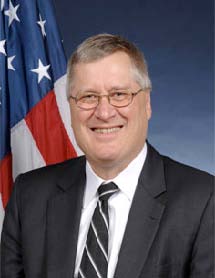 |
Next-Generation Atomtronics |
Biography Charles W. Clark is a NIST Fellow, National Institute of Standards and Technology, and Co-Director of the Joint Quantum Institute of NIST and the University of Maryland. He is a theoretical atomic, molecular and optical physicist with research interests in the dynamics of ultracold atoms and atomic and molecular processes in neutron reactions. A career civil servant, he received the Distinguished Presidential Rank Award in 2007, a R&D 100 Award in 2008, and the Gold Medal of the Department of Commerce and the Government Computer News Award for Information Technology Achievement in 2011. He is a Fellow of AAAS and the 2012 Retiring Chair of the AAAS Physics Section. Abstract Many applications of materials science depend on multifunctional materials in which control of one physical characteristic induces changes in another, quite different property. During the past fifteen years or so, a new kind of "materials science" has emerged in the development of ultracold, dilute atomic and molecular gases; the 1997, 2001 and 2005 Nobel Prizes in Physics recognized developments in this area. "Atomtronics," in which cold atoms carry information through a tenuous medium, in a role analogous to that played by electrons in a solid, offers opportunities beyond those available in conventional multifunctional materials. This is due to the rich internal state structure of atoms, vs. the two spin states of the electron; to the ability to create nearly ideal potential landscapes that govern atomic motion, particularly through the use of optical lattices; and the possibility of synthesizing gauge potentials, even of non-Abelian varieties. I will review recent experimental and theoretical work in this fast-moving field, and discuss its future applications to measurement, sensing, and quantum logic.
|

